
Jutland Cattle
- Home
- Our work
- Farm animals
- Nordic native breeds
- Jutland Cattle
Origin: Denmark
Danish name: Jysk Kvæg
Weight: 550kg (cows), 1000kg (bulls)
Height: 134cm (cows), 145cm (bulls)
Colour: Variegated grey to black with horns
Type: Dual purpose breed, primarily bred for milking traits since 1900
Number of offspring: 1
Birthweight: 40kg
Number of cows in Denmark, 2017: 632
History:
Jutland Cattle is one of the oldest cattle breeds in Denmark. As implied by the name, the breed origins from a variegated type of cattle widespread across Jutland, Denmark, from the 17th to the 20th century. In 1881, the first studbook was published with the foundation of the breed. This is just three years later than the oldest danish cattle breed, Danish Red anno 1970, was founded. There was included approximately 100 cattle in the studbook. All of them being of dual purpose.
In the 20th century the breed was selected for improvement in milking traits. Between 1900 and 1950 colour as a trait was standardised as one preferred black variegated cattle which was more similar to the Dutch black variegated cattle. The colour variant was called Black variegated Jutland Milking breed, in Danish Sortbroget Jydsk Malkekvæg (SJM). Already during the first 10 year of the 20th century almost every bullcalf was of this colour variation. The association for SJM cattle agreed in 1949 that Dutch Cattle and as well as crossbred offspring could enter a new studbook with the breed name Danish Black and White Cattle, in Danish Sortbroget Dansk Malkerace (SDM). As a consequence, nearly the entire danish population was crossbred with Dutch Cattle in the following 10 years and in 1955 the last bull of the breed Jutland Cattle was exhibited after which the breed officially ceased to exist.
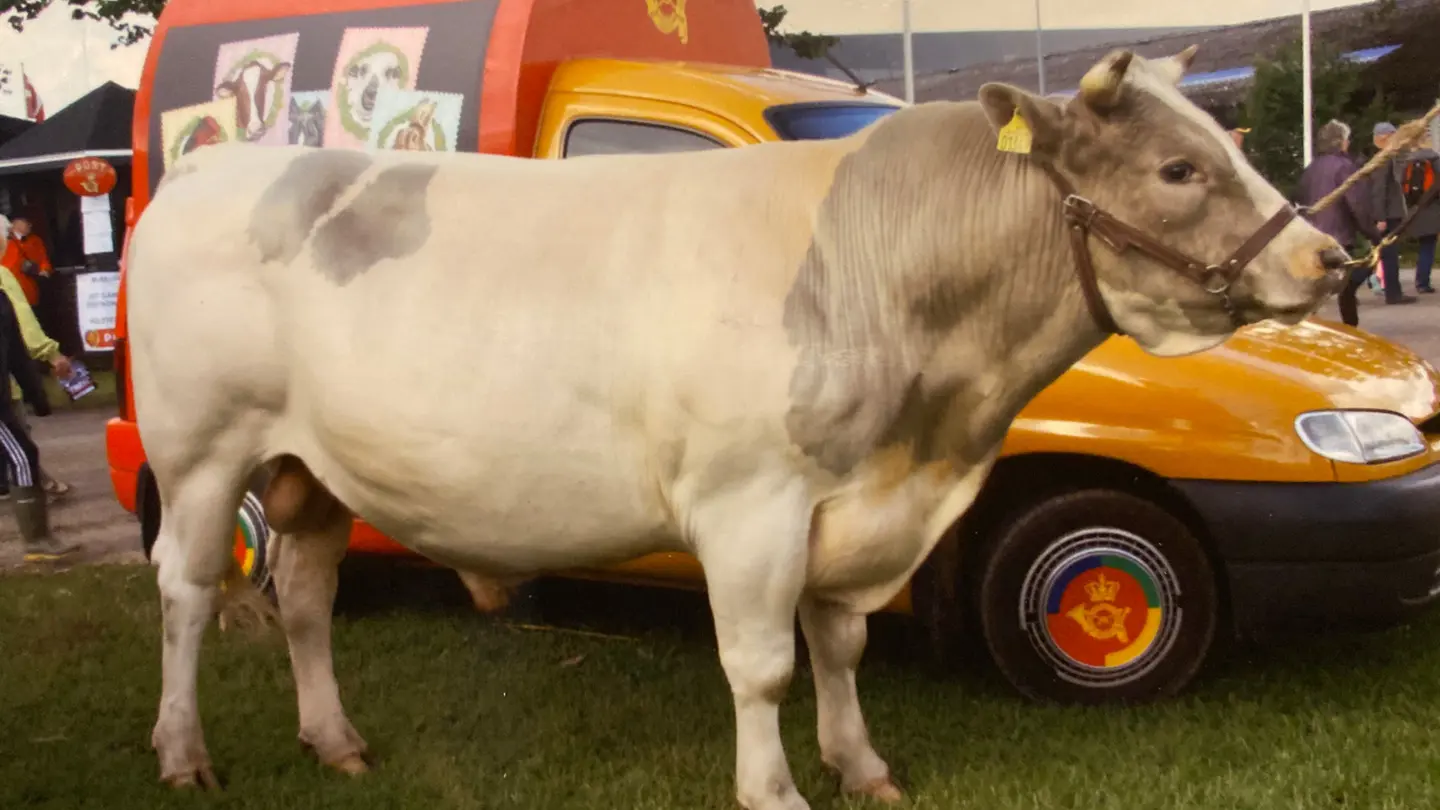
Conservation:
A handful of breeders avoided crossbreeding their cattle with the Dutch Cattle by using bulls from their own herd in breeding and as late as the 1980’s it was still possible to locate single animals which in exterior and type were similar to the original Jutland Cattle. In 1987 the Danish Conservation committee decided to participate in the conservation of the breed.
Unfortunately, none of the animals included in breeding of Jutland Cattle has pedigrees with more than a few known generations of ancestors. Therefore, conservation of Jutland Cattle is based on a population where every individual is approved by the conservation committee. The committee has had semen tapped after approximately a dozen bulls that all are approved by the conservation committee as representants of Jutland Cattle. Their offspring is approved as Jutland Cattle if the mother of the calf is approved.
The conservation committee advises the ministry in conservation of farm animal genetic resources. The committee has changed both name and terms of reference several times since the committee decided to participate in conservation of the breed. Today the committee is called “The advisory Conservation Committee for Danish Farm Animal Genetic Resources for native Danish livestock breeds”, in Danish “Det rådgivende Bevaringsudvalg for Danske Husdyrgenetiske Resourcer hos oprindelige danske husdyrracer”.
The current committee was formed in 2013. The conservation committee, which is formed by the Ministry of Environment and Food of Denmark, only holds an advisory role in relation to conservation of the breed. The committee must advise the Ministry of Environment and Food of Denmark in questions related to conservation of genetic resources in native Danish farm animal breeds. The committee is therefore not involved in concrete breeding for conservation of the breed as this responsibility relies on the breed associations.
There are two associations working for conservation of the breed. They are called "The association for Danish farm animal breeds" and "The association for old Danish farm animal breeds", respectively. Their purpose is to conserve the old native farm animal breeds and spread knowledge about the breeds. In 1997, there was a population of Jutland Cattle in Denmark of 120 cows and 6 bulls. In 2017, the population had increased to 632 cows and 100 bulls. The increase is largely due to renewed interest in the breed from open-air museums, public institutions, and private owners. The current population differs, however, somewhat from the original populations since they are markedly larger than the individuals were in the middle of the 20th century. Similarly, the milk yield is also significantly higher than it was in the middle of the 20th century. However, the percentage of fat is lower.
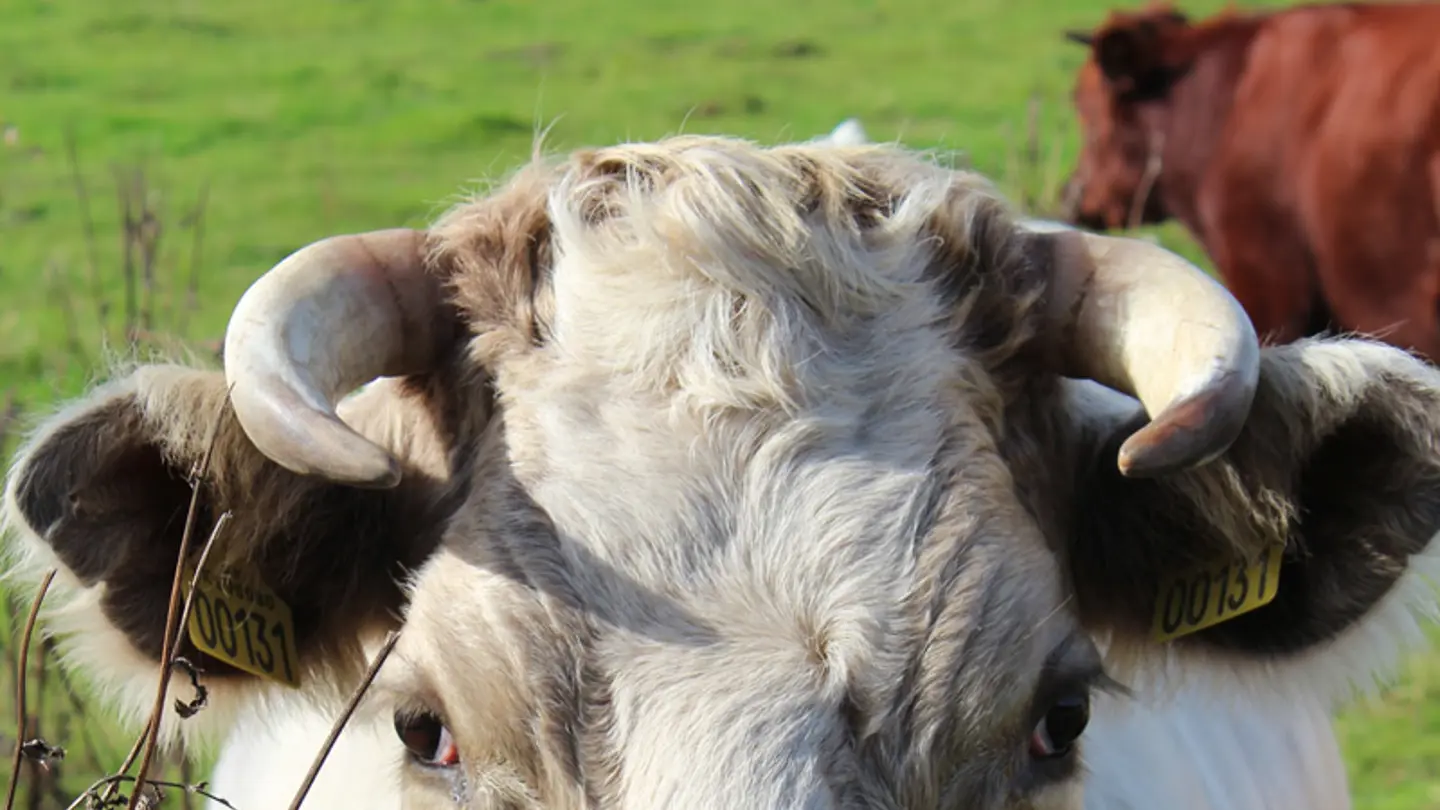
Characterization of the breed in research:
Ongoing research activities aims at characterization of the breed. Characterization is an important aspect of conservation since we thereby learn about the uniqueness of the breed and its characteristics. A study conducted by NordGen showed that up until 2019, 17 different easily accessible characterization studies including the breed were conducted. The majority of the studies was studies on molecular genetics of milk proteins as well as genetic variation within Jutland Cattle and between Jutland Cattle and a range of other breeds. Only two studies have focused on the phenotypic characteristics of the breed by describing colour and the prevalence of horn as well as protein profiling of milk in relation to technological properties. There was only found one study focusing on the breed’s socio-economic value by investigating gene culture co-evolution between milk protein and human lactase. Thus, there is a great need to continue characterization of Jutland Cattle in order to clarify more aspects concerning Jutland Cattle’s traits. Increasing characterization will improve decision-making in conservation of the breed for future purposes.
Production (305 days)
Milk: 6267kg
Fat: 3,9%
Protein: 3,3%
References
Sørensen, L.H. og Nielsen, V.H. (2017). Danske Husdyrgenetiske ressourcer. DCA rapport, nr. 100. DCA – Nationalt Center for Fødevarer og Jordbrug, Aarhus Universitet
Landbrugsstyrelsen. (2020). available online: https://lbst.dk/landbrug/genetiske-ressourcer/husdyrgenetiske-ressourcer/ accessed 1st of May 2020
Kierkegaard, L.S., Groeneveld, L.F., Kettunen, A., Berg, P. (2020). The status and need for characterization of Nordic animal genetic resources, Acta Agriculturae Scandinavica, Section A — Animal Science, 69:1-2, 2-24, DOI: 10.1080/09064702.2020.1722216
Beja-Pereira, A., Luikart, G., England, P. R., Bradley, D. G., Jann, O. C., Bertorelle, G., Chamberlain, A. T., et al. (2003). Gene-culture coevolution between cattle milk protein genes and human lactase genes. Nature Genetics 35(4), 311–313. doi:10.1038/ng1263.
Bennewitz, J., Kantanen, J., Tapio, I., Li, M. H., Kalm, E., Vilkki, J., Ammosov, I., et al. (2006). Estimation of breed contributions to present and future genetic diversity of 44 North Eurasian cattle breeds using core set diversity measures. Genetics Selection Evolution 38(2), 201–220. doi:10.1051/gse:2005036.
Brüniche-Olsen, A., Gravlund, P. & Lorenzen, E. D. (2012). Impacts of genetic drift and restricted gene flow in indigenous cattle breeds: evidence from the Jutland breed. Animal Genetic Resources 50, 75–85.
European Cattle Genetic Diversity Consortium*. (2006). Marker-Assisted conservation of European cattle breeds: An evaluation. Animal Genetics 37(5), 475–481. doi:10.1111/j.1365-2052.2006.01511.x.
Jensen, H.L. (2020). Personlig kommunikation
Kantanen, J., Olsaker, I., Brusgaard, K., Eythorsdottir, E., Holm, L.-E., Lien, S., Danell, B. & Adalsteinsson, S. (2000a). Frequencies of genes for coat colour and Horns in Nordic cattle breeds. Genetics Selection Evolution 32, 561–576.
Kantanen, J., Olsaker, I., Holm, L.-E., Lien, S., Vilkki, J., Brusgaard, K., Eythorsdottir, E., Danell, B. & Adalsteinsson, S. (2000b). Genetic diversity and population structure of 20 North European cattle breeds. The Journal of Heredity 91(6), 446–457.
Kantanen, J., Edwards, C. J., Bradley, D. G., Viinalass, H., Thessler, S., Ivanova, Z., Kiselyova, T., et al. (2009). Maternal and paternal genealogy of Eurasian Taurine cattle (Bos Taurus). Heredity 103(5), 404–415.
Li, M. H., Adamowicz, T., Switonski, M., Ammosov, I., Ivanova, Z., Kiselyova, T., Popov, R. & Kantanen, J. (2006). Analysis of population differentiation in North Eurasian cattle (Bos Taurus) using single nucleotide polymorphisms in three genes associated with production traits. Animal Genetics 37(4), 390–392. doi:10.1111/j.1365-2052.2006.01479.x.
Li, M.-H. & Kantanen, J. (2010). Genetic structure of Eurasian cattle (Bos Taurus) based on microsatellites: Clarification for their breed classification. Animal Genetics 41(2), 150–158. doi:10.1111/j.1365-2052.2009.01980.x.
Lien, S., Kantanen, J., Olsaker, I., Holm, L.-E., Eythorsdottir, E., Sandberg, K., Dalsgard, B. & Adalsteinsson, S. (1999). Comparison of milk protein allele frequencies in Nordic cattle breeds. Animal Genetics 30, 85–91.
Negrini, R., Nijman, I. J., Milanesi, E., Moazami-Goudarzi, K., Williams, J. L., Erhardt, G., Dunner, S., et al. (2007). Differentiation of European cattle by AFLP Fingerprinting. Animal Genetics 38(1), 60–66. doi:10.1111/j.1365-2052.2007.01554.x.
Pertoldi, C., Purfield, D. C., Berg, P., Jensen, T. H., Bach, O. S., Vingborg, R. & Kristensen, T. N. (2014). Genetic characterization of a herd of the endangered Danish Jutland cattle. Journal of Animal Science 92(6), 2372–2376. doi:10.2527/jas.2013-7206.
Tapio, I., Värv, S., Bennewitz, J., Maleviciute, J., Fimland, E., Grislis, Z., Meuwissen, T. H. E., et al. (2006). Prioritization for conservation of Northern European cattle breeds based on analysis of microsatellite data. Conservation Biology 20(6), 1768–1779. doi:10.1111/j.1523-1739.2006.00488.x.
Withen, K. B., Brüniche-Olsen, A., Pedersen, B. V., European Cattle Genetic Diversity Consortium & Gravlund, P. (2011). The agersoe cattle: The last remnants of the Danish Island cattle (Bos Taurus)? Journal of Animal Breeding and Genetics 128(2), 141–152. doi:10.1111/j.1439-0388.2010.00883.x.
Das, A., Panitz, F. & Holm, L. (2014). Identification and Annotation of Genetic Variants (SNP/Indel) in Danish Jutland Cattle. In Vancouver: 10th World Congress on Genetics Applied to Livestock Production, 17–22, available at: https://www.asas.org/docs/default-source/wcgalp-posters/666_paper_9560_manuscript_1719_0b.pdf?sfvrsn=2
Rosengaard, A. K. (2016). Protein profiling of milk from native Nordic cattle breeds in relation to technological properties. Aarhus University, available at: http://library.au.dk/fileadmin/www.bibliotek.au.dk/fagsider/jordbrug/Specialer/Specialerapport_Anette_Rosengaard.pdf
Utsunomiya, Y. T., Bomba, L., Lucente, G., Colli, L., Negrini, R., Lenstra, J. A., Erhardt, G., Garcia, J. F. & Ajmone-Marsan, P. (2014). Revisiting AFLP fingerprinting for an unbiased assessment of genetic structure and differentiation of taurine and Zebu cattle. BMC Genetics 15(1), 47.
Read more about our other native breeds
-
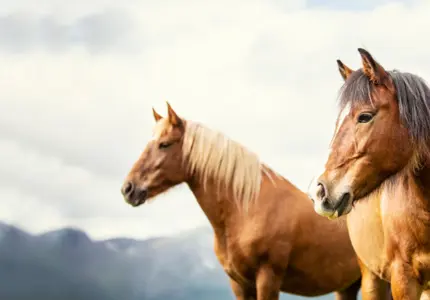
Nordland/Lyngen Horse
The first known and documented exhibition where this breed participated, was in 1898 at Lyngseidet in Troms. In the 1930s, organized breeding of Nordland/Lyngen horses started.
Read more about the breed
-
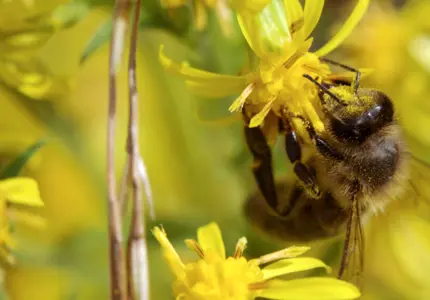
The Nordic brown bee
Honey bees are threatened by intensive agriculture, habitat loss and climate changes worldwide and are important to conserve, not only due to their honey production but also due to their pollination services.
Read more about the breed
-
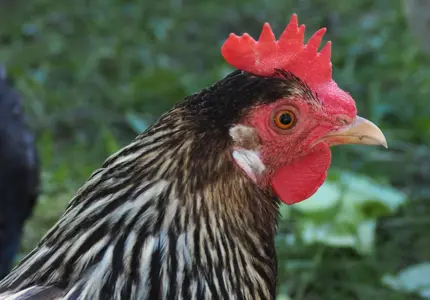
Finnish Landrace Chicken
In 1974, the agricultural advisory agency collaborated with Seiskari and published a call to find remains of the Finnish landrace chicken. As a result, one flock was found in South-East Finland. This family line was named after its geographical location as “Savitaipaleenkanta”.
Read more about the breed